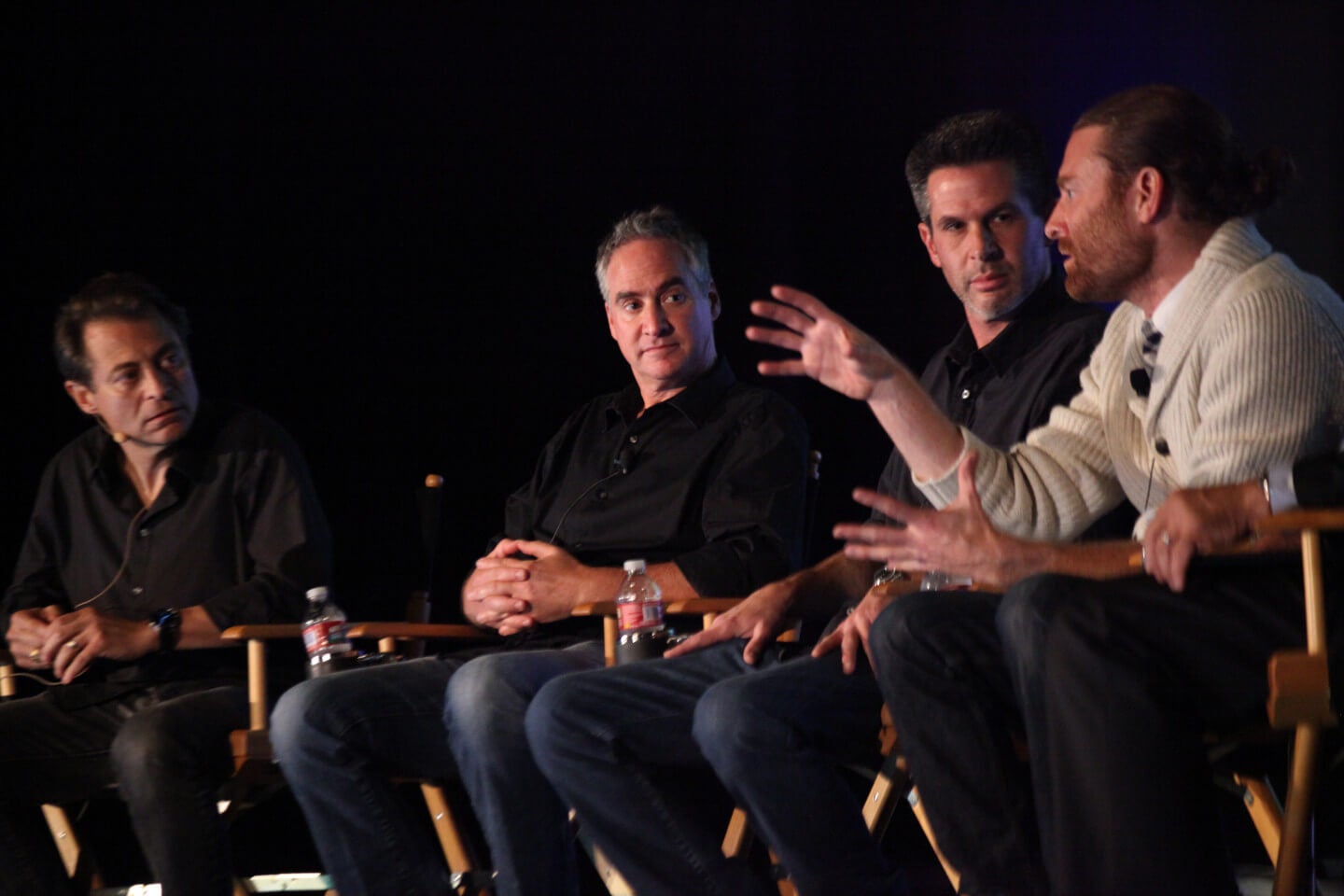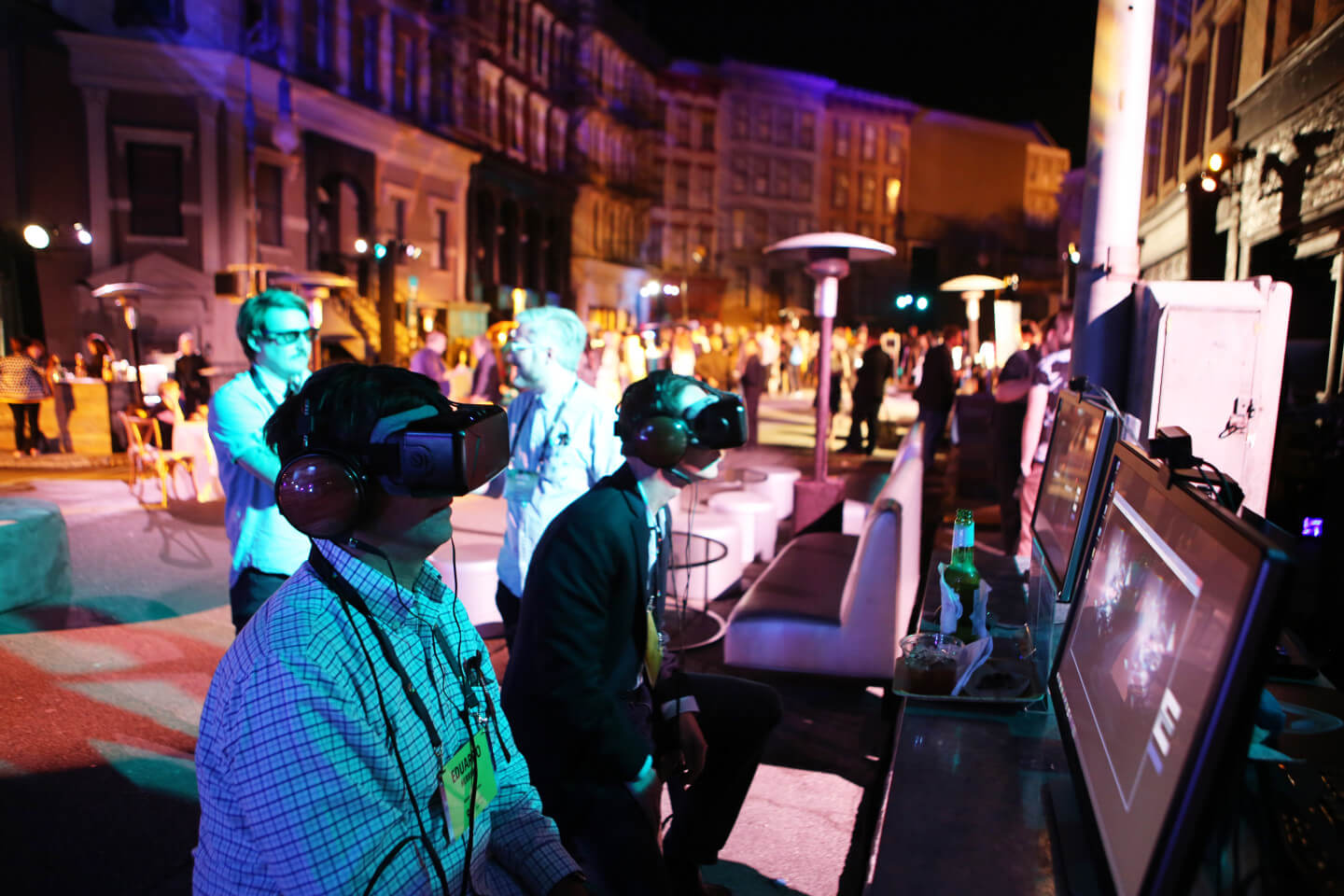Are Movie Theaters About to Disappear? How VR Will Remake Hollywood

Share
Since the first public movie theater opened in the U.S. in 1905, movies have evolved significantly—sound, color, computer effects, high definition. However, one thing hasn’t changed. We still go to the theater to see our favorite films on the big screen.
But for how long? During a panel at a recent program put on by 20th Century Fox Studios and Singularity University, an unspoken question lingered in the audience: Are movie theaters on the verge of extinction?
Long gone are the days when a movie was isolated to a two-hour screening at a public theater near you. Feature films are now built up months prior to release on multiple media platforms and are later continually expanded post-release.
Meanwhile, a powerful new medium is on the horizon.
After a few years in development, the first high-end consumer virtual reality devices are due in 2016. Consumer VR promises to immerse viewers in visual experiences more completely than IMAX—and from the comfort of their own couch.
And there’s evidence this is exactly what we want. From buying bigger and bigger high-definition televisions to installing full surround sound in our family rooms—for decades people have been busily recreating the big theater experience at home.
But it’s not just a fully immersive viewing experience that VR promises. It will also bring something entirely new by enabling the audience to become the producers of their own experience.
Look right, look left, look up, look down—each viewer in VR gets to dictate and experience their own sequence of the story. And what this means for Hollywood is that storytelling as we’ve known it is vanishing, and fast.
Moviegoing, however, has never simply been about storytelling or viewing feature films. Rather, going to the theater has historically represented a pillar of American culture and shared entertainment.

From left to right, Peter Diamandis, MD Executive Chairman Singularity University, Ted Schilowitz, Futurist in Residence at 20th Century Fox, Simon Kinberg, Producer of the X-Men series and The Martian, Chris Milk , CEO and cofounder of VRSE. (Not in photo: Jim Gianopulos, Chairman and CEO 20th Century Fox)
To date, Hollywood has evolved and adapted to cultural preferences and survived entertainment’s decentralization, from television to Netflix. But VR may be more than just the next step in feature film entertainment.
When each member of an audience is wearing their own VR headset and dictating their own experience of a story, will people still want to sit down together in movie theaters? Will a new model of shared entertainment arise, or will entertainment become a more individual (lonelier?) phenomenon?
During the Fox Studios panel on “The Future of Entertainment, Film, and Virtual Reality,” Simon Kinberg, producer of The Martian and the X-Men series, asked whether we are facing a societal shift in what shared experience is.
Kinberg is looking to the next generation of moviegoers and wondering whether that generation will even go to films in theaters if the in-theater experience becomes virtual. Though movie theaters offer the community appeal to current moviegoers, they may not hold that same relevance for future generations.
Be Part of the Future
Sign up to receive top stories about groundbreaking technologies and visionary thinkers from SingularityHub.


Also on the panel was Chris Milk, CEO and cofounder of virtual reality company VRSE, widely known for creating Clouds over Sidra—a VR experience of the life of Sidra, a 12-year-old girl and Syrian refugee, who is living with her family in the Zaatari refugee camp (currently home to 130,000 Syrian refugees).
Milk works at the frontiers of interactive technology and is experimenting with VR as a canvas for human storytelling and to evoke empathy; a subject he unpacked in a TED talk earlier this year, remarking, “VR connects humans to other humans in a profound way that I’ve never seen in any other form of media.”
During the panel, Milk pointed out that we are still only in the second year of VR storytelling and on just the very first iterations of the hardware. But Milk sees VR as a medium that does offer the opportunity for real human connection, though we’re only beginning to explore how to make this work effectively.
VR is currently first and foremost visual. But new products are being developed to bring other senses into the VR experience, such as haptic gloves simulating touch. Knowing this, the ability for VR to create social connectivity only seems like the natural next step.
In the future, VR users may be able to watch and interact with other viewers of the same film who have logged in from different locations around the world. In this scenario, VR would, in fact, more effectively bridge the gap between you and the stranger next to you in a theater—though they may only be “next” to you virtually.
If, as Milk says, VR is a machine that can drive deeper compassion and make us more human, then the desire for shared-communal entertainment will continue, though physical theaters, as we know them, may very well disappear.
How do you think entertainment will evolve as VR enters Hollywood? Leave a comment here or connect with me on twitter @DigitAlison or @SingularityHub
Photo credit: Trevor Traynor
Alison tells the stories of purpose-driven leaders and is fascinated by various intersections of technology and society. When not keeping a finger on the pulse of all things Singularity University, you'll likely find Alison in the woods sipping coffee and reading philosophy (new book recommendations are welcome).
Related Articles

Data Centers in Space: Will 2027 Really Be the Year AI Goes to Orbit?

How Scientists Are Growing Computers From Human Brain Cells—and Why They Want to Keep Doing It

Scientists Say We Need a Circular Space Economy to Avoid Trashing Orbit
What we’re reading

